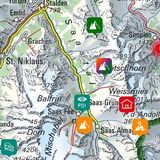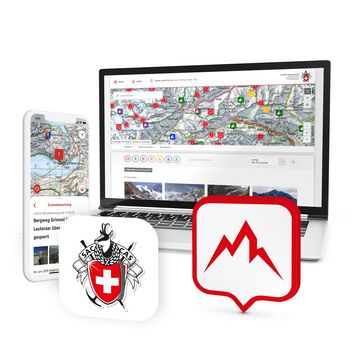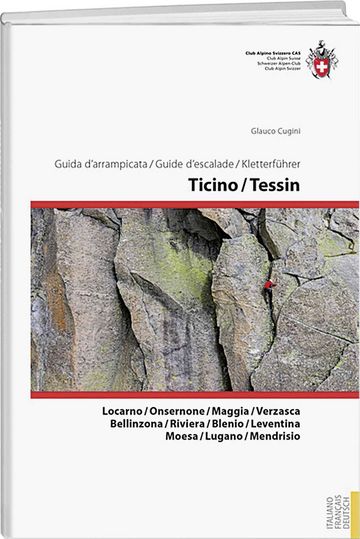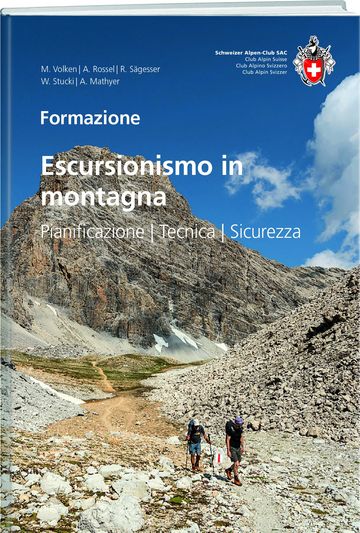From Chironico via Cala (Normal route) Rifugio Alpe Sponda 2000 m
-
- Difficulty
- T2
-
- Ascent
- 3:45 h, 1230 m
-
- Descent
- 20 m
First a tarred road, then a paved trail and in the end a mountain hiking trail
From Chironico (one of Europe’s best-known boulder hotspots) the trail to Rifugio Alpe Sponda leads, rather boringly, into Val Chironico. However, it is not boring because of the valley, quite the contrary. It is the tarred surface that makes the trail unpleasant. After about 40 minutes, shortly before the end of the small road, we branch off right to hike on a splendid old mule-track and gain height in countless zigzags. We reach the sunny terrace of Cala. Now the trail narrows, goes through a forest for a while (ideal to take a deep breath after the ascent) and then zigzags up to the timber line and Alpe Sponda. The characteristic cabin is only a few minutes further up.
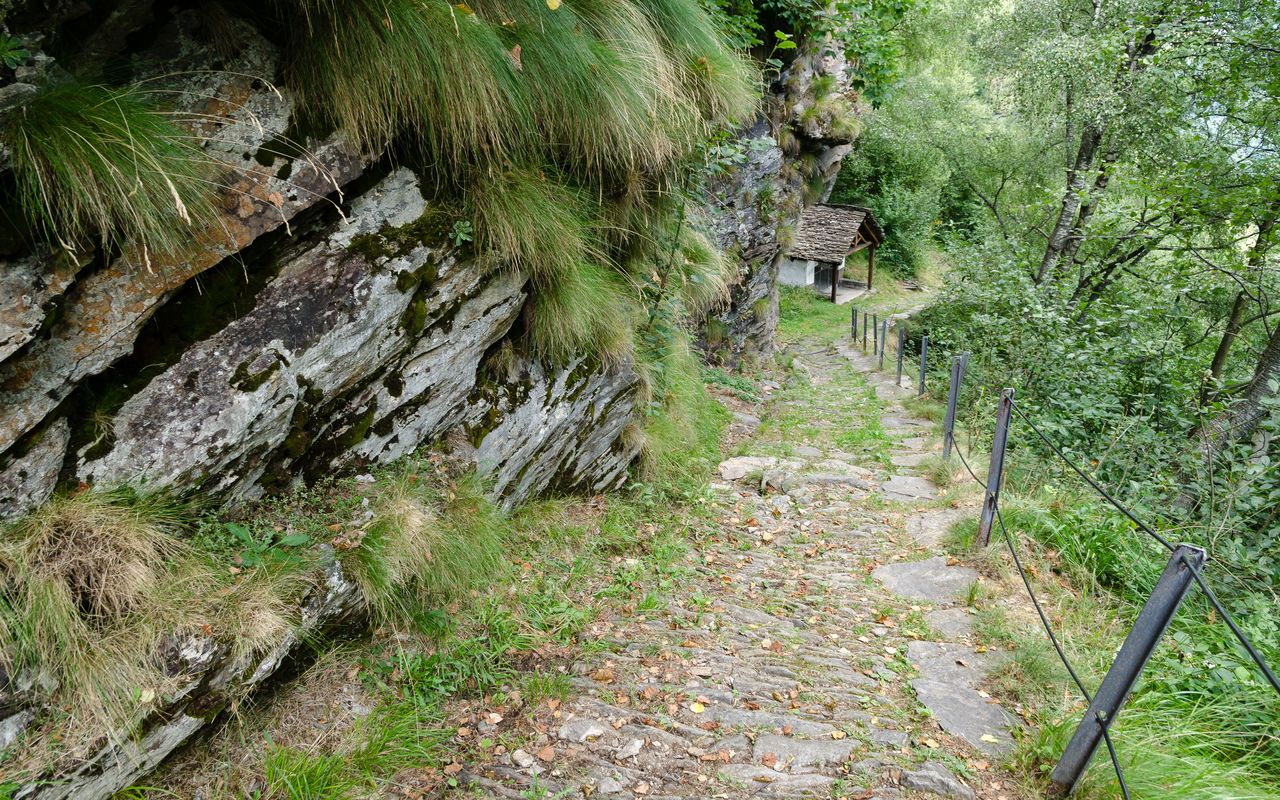
Route description
Chironico – Rifugio Alpe Sponda
From the bus stop in Chironico go through the village (maybe with a visit to the small church S. Ambrogio, simple and beautiful inside) and follow the tarred road through Val Chironico until Valle. Shortly before the parking area (ca. 940 m) take the mule-track to the right and hike past several chapels to Sgnoi. Choose the trail to the left and hike via Artengo to the mountain pasture huts at Cala. Shortly after the end of the village you reach a bifurcation. To the right is the «old» trail (see variant), straight on is the «new» trail. Follow the latter until a forested ridge (P. 1537). Now zigzag straight on up to P. 1828 and from there to the buildings of Alpe Sponda. Finally go to the right to the cabin.
Variant «old» trail
The «old» trail was officially given up and replaced by a new one, which is easier to maintain. However, the «old» trail is still very popular, as it is more direct, about 10 minutes shorter and technically more interesting (T3 with narrow passages and fixed ropes). It is recommended to undertake the old trail only in dry conditions. West of Cala it branches off to the right, ascends via P. 1660 and traverses a rocky escarpment before merging with the official trail at P. 1828.



